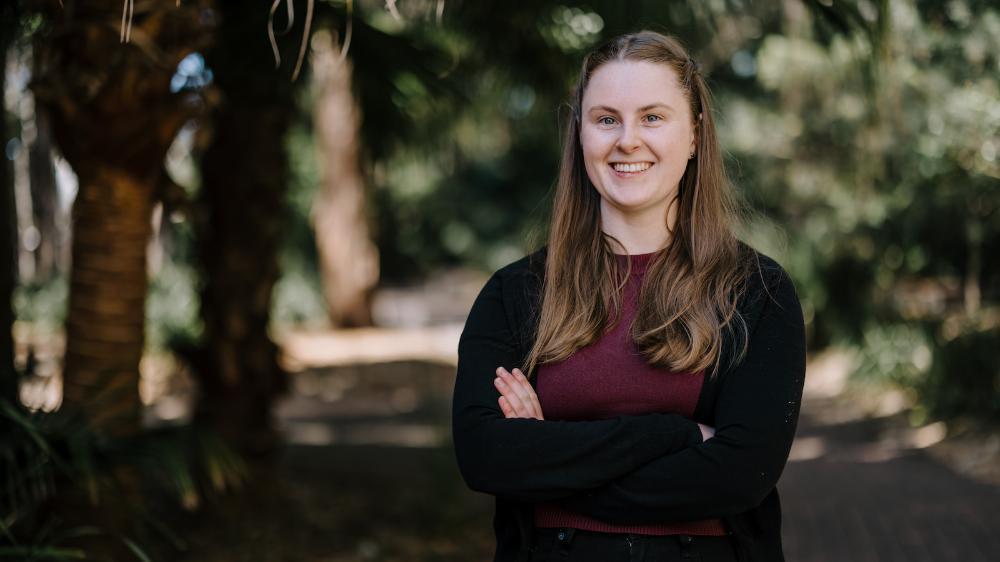October 2, 2024
Bushfires have surged in frequency and intensity over last 200 years
New record of fire history in southeastern Australia shows significant shift in fire activity compared to previous 3000 years
In the past 200 years, bushfires in southeast Australia have become more frequent and intense, according to new research from the University of Wollongong (UOW), which has expanded our historical understanding of how fires impact, and interact with, the Australian landscape.
Led by first author Rebecca Ryan, from UOW’s School of Earth, Atmospheric and Life Sciences, the research, published in the International Journal of Wildland Fire, sheds light on how fire characteristics have evolved over more than 3000 years, with rapid change taking place in just the past two centuries.
“Most existing records of fire characteristics only stretch back approximately 50 years, when satellites came into use,” Ms Ryan said. “But we need at least a 100-year record to understand how fire characteristics may change in the future.”
The research was conducted by Rebecca Ryan and Professor Anthony Dosseto from the Wollongong Isotope Geochronology Laboratory, and Emeritus Professor Ross Bradstock and Dr Katharine Haynes from the School of Earth Atmospheric and Life Sciences at UOW. Collaborators from the University of New South Wales, the Australian National University, James Cook University, the University of Southampton in the United Kingdom and Comenius University in Slovakia also contributed to the paper.
Ms Ryan collected sediment samples in the Blue Mountains in New South Wales and Namadgi National Park in the Australian Capital Territory. Using Fourier Transform Infrared (FTIR) spectroscopy, she analysed changes in the chemical bonds of the sediments to unravel the changes in fire intensity over thousands of years. She then compared these with pollen and drought records to understand paleoenvironmental drivers for fire behaviour.
“Each chemical bond has a unique interaction with the infrared light, which allows us to detect changes in the chemistry of the sediment. By looking at a ratio between the bonds created during a fire (aromatic) and those destroyed during a fire (aliphatic), we can assess the intensity, or the heat and energy output of past fire events,” Ms Ryan said.

Rebecca Ryan, pictured at Wollongong campus. Photo: Michael Gray
The researchers found that the past 200 years have seen a significant increase in the frequency and intensity of fires in southeastern Australia, a result, Ms Ryan said, of the complex interactions between climate, people, and vegetation.
“These three factors are so interconnected and entangled that it is near impossible to attribute just one of these factors as the sole driver for these more frequent and intense fire events in the last 200 years.
“Over the past 200 years, there has been a shift in vegetation species, particularly the expansion of eucalypts which has increased the ability for the fire to burn into the canopy. The volatile oils present within the eucalypt species also increase the energy output of the fire and promote fire spread.
“The increased frequency of extreme and prolonged droughts means that there is an increased incidence of human-ignited fires coinciding with severe fire weather and higher fuel loads.”
The research forms the basis of Ms Ryan’s PhD thesis, which she has recently submitted, under the supervision of Professor Dosseto and Dr Haynes. These results are part of the ARC Discovery Project ‘Shaping a Sunburnt Country’, which was awarded to Professor Dosseto and Professor Bradstock in 2019.
Understanding how fire behaviour has changed is vital to inform how we prepare for and fight these fires in the future, Ms Ryan said.
“We saw the damage of the Black Summer fires to the environment and communities. There are still many areas and people who have not recovered from that.
“This new record expands our knowledge of the history of fire characteristics in southeastern Australia. It is important to inform how organisations such as the Rural Fire Service and National Park and Wildlife Service approach land management practices and fight more frequent fires that burn at higher intensities.
“There is also a moral obligation to understand these changes and ensure we do all we can to mitigate the risk and prepare for these events.”
About the research
“Assessing changes in high-intensity fire events in south-eastern Australia using Fourier Transform Infra-red (FITR) spectroscopy”, by Rebecca Ryan, Zoë Thomas, Ivan Simkovic, Pavel Dlapa, Martin Worthy, Robert Wasson, Ross Bradstock, Scott Mooney, Katharine Haynes, and Anthony Dosseto in the International Journal of Wildland Fire: https://doi.org/10.1071/WF24064
:format(jpg)/prod01/channel_3/assets/media-centre/matt-palmer-AuEVJLpb96k-unsplash-1.jpg)